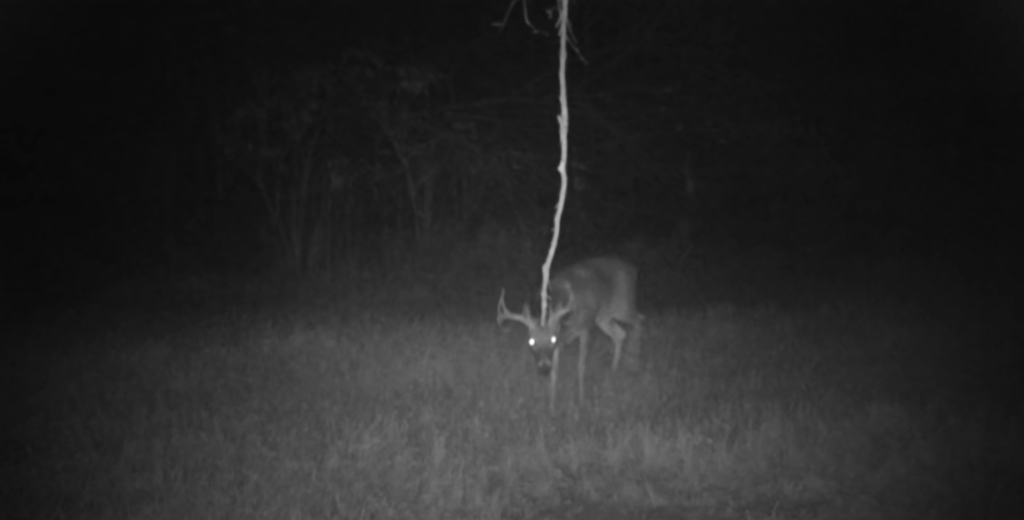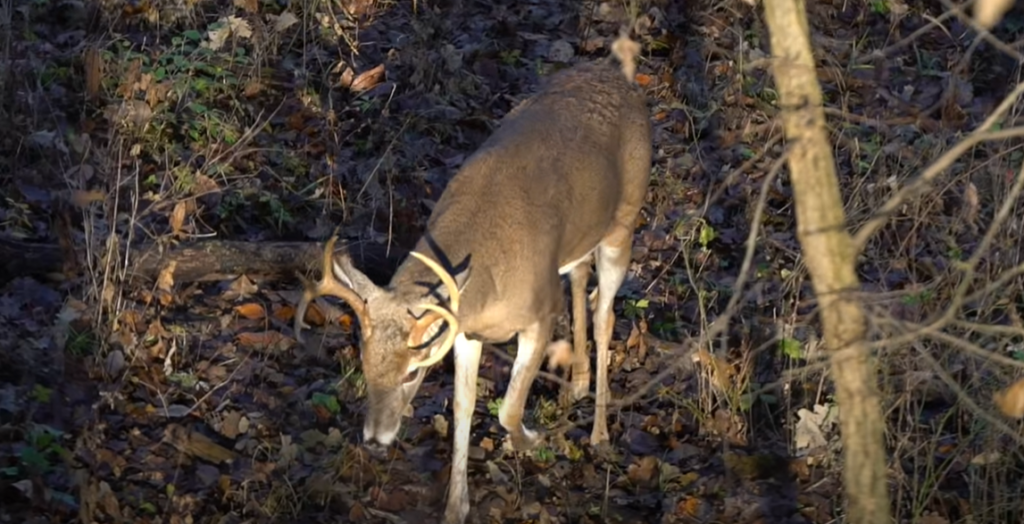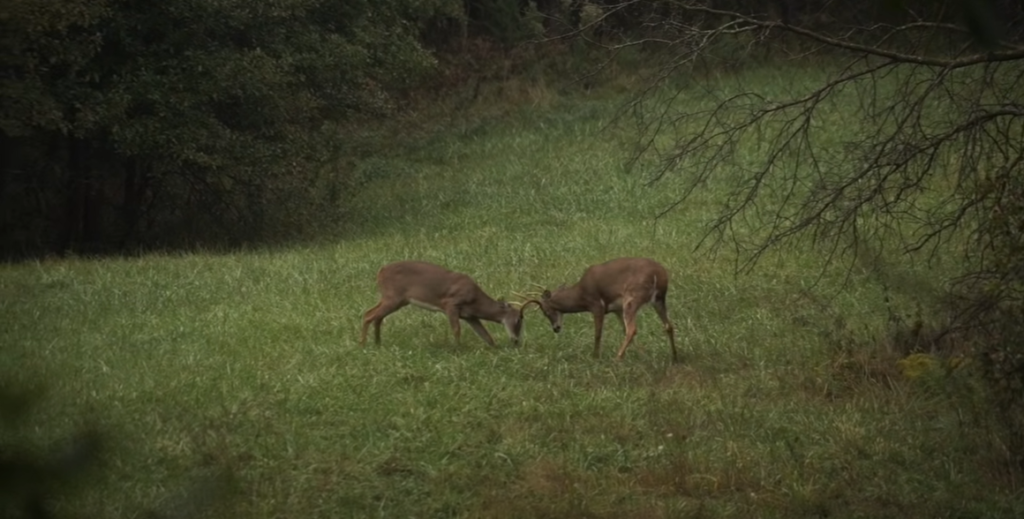Hunting is a popular activity for many people, but there are certain limitations that must be considered when engaging in this recreational pastime. Understanding these limiting factors can help ensure successful hunting trips and avoid potential danger. The most important of these factors are the legal regulations imposed by state laws, the availability of game, weather conditions, habitat quality, hunter safety and access to land. By understanding each of these areas and how they affect your hunt you will be able to make the most out of your time in the outdoors.
Table of Contents
Why Do Limiting Factors Matter?
Limiting factors can play a significant role in the success of any hunting trip. By understanding why each limiting factor is important, hunters can take steps to ensure their safety and increase their chances of success.
Legal regulations are essential for protecting both wildlife and hunters alike. Knowing and abiding by state-level rules will help keep your hunt legal and respectful. Furthermore, understanding the availability of game can help you decide which areas to hunt in, as well as when and how to go about searching for your desired species.
Habitat quality is another factor, as this can determine the number of animals in an area and their habits within that environment. If a habitat is not suitable, there will be fewer animals present than if it was in a healthier state. Knowing the types of habitat you’ll be hunting in can help you adjust your search accordingly.
Hunter safety is critical when out in the field, as hunters must take extra precautions to ensure their own safety and that of others. Wearing bright clothing, paying attention to wind direction and staying knowledgeable on basic first aid are all essential components of safe hunting practices.
Finally, access to land is a major limiting factor, as private and public lands can differ greatly in terms of hunting regulations. Knowing the distinctions between these areas will help you determine where you are allowed to hunt and what rules apply.

Hunt The Water
When it comes to hunting waterfowl, there are a number of limiting factors that can be taken into consideration. The most important factor is the season. During certain times of the year, waterfowling may not be allowed due to conservation efforts or other regulations. It’s important for hunters to familiarize themselves with local regulations before engaging in waterfowl hunting.
In addition to the season, hunters must also be aware of changes in water levels and other environmental conditions that could affect hunting success. If a lake or river is too low, ducks may not be able to gather in the same areas as they would during higher water levels. Similarly, if there’s too much water, ducks may not be able to access food sources and other resources they rely on. Finally, hunters must also consider the presence of predators such as raccoons, foxes, and coyotes that could potentially scare away their prey.
Find The Acorn, Find The Deer
One of the most important limiting factors in hunting is a hunter’s ability to locate their prey. The process of scouting can take weeks or months depending on the species being hunted, and even then, deer are constantly on the move. They often feed and bed down in different areas frequently, making it difficult for hunters to stay ahead of them. To have success in hunting, a hunter must be able to identify their deer’s patterns and predict where they will be moving next.
Finally, seasons and regulations must be taken into consideration when hunting. In some states, there may only be a few days or weeks of open season for certain types of game animals. Also, many areas have regulations in place that may limit the type or amount of weapons or ammunition that hunters can use. By understanding and following these regulations, hunters will be able to stay safe and have a successful hunt.
Thermoregulation: Animals Need To Stay Warm
Animals need to maintain their body temperature in order to hunt. If the outside environment is too cold, animals may not be able to generate the energy needed for hunting. Additionally, if the environment is too hot, animals may become overheated and unable to continue hunting until they are cooled off sufficiently. This can be a major limiting factor in hunting, especially in climates that experience extreme temperatures. Animals may also struggle to stay warm if they become wet due to rain or snow, further limiting their ability to hunt effectively.
The Take-Home Message
Limiting factors in hunting can be divided into two categories: natural and human-imposed. Natural limiting factors include availability of prey, weather conditions, disease risk, and habitat quality. Human-imposed limitations are typically related to conservation efforts or regulations such as hunting seasons, bag limits, and area closures. Allowing for these limitations is important for sustaining wildlife populations and preserving hunting opportunities. Understanding the limitations of a given area is key to effective and responsible hunting. By taking into account these factors, hunters can ensure that their activity is managed in a way that both respects nature and creates lasting enjoyment for all involved.
The take-home message is clear: understanding limiting factors in hunting is an important part of responsible hunting. Knowing what restrictions are in place and how they affect success on the hunt is essential for successful and ethical harvesting of game. With this knowledge, hunters can make decisions that help protect wildlife populations for future generations to enjoy.

Human Limiting Factors
Hunting requires a great deal of skill and effort to be successful, so it’s no surprise that humans are one of the main limiting factors in hunting. Different aspects of human influence can impede success when hunting:
- Poor understanding of animal behavior can lead to ineffective hunting strategies, as well as safety risks for both the hunter and the hunted.
- Unseasoned hunters can lack the physical strength, stamina, and endurance needed to sustain a hunt over longer periods of time.
- Poor equipment selection and maintenance can also limit success when hunting, as inadequate gear and supplies can slow down progress or cause distractions in critical moments.
- Human-created obstacles can also impede hunting success. Areas with large amounts of human activity, such as urban sprawl and infrastructure construction, can disrupt wildlife habitats, reduce animal populations available to hunt, or increase competition between hunters for limited resources.
Natural Balance
Limiting factors in hunting are important to maintain the balance of nature. When populations of animals increase beyond a certain limit, they can deplete their natural food sources and cause environmental damage. Hunting is one way to control animal populations so that the ecosystem remains healthy. It also helps keep predators in check, as too many predators can lead to an imbalance in the food web. Hunting can also help reduce competition for resources, such as water and land, between different species.
By limiting hunting, it is possible to protect endangered species and ensure that their populations remain stable. It is important to remember that hunting should never be undertaken recklessly or without proper management strategies in place. It is essential to maintain the balance of nature and ensure that wildlife populations are not depleted beyond sustainable levels.
FAQ
Why is predator a limiting factor?
Predators are a limiting factor for hunting because they can reduce the number of prey in an area, making it more difficult for hunters to find and catch what they are looking for. For example, if there is a large population of predators in a given environment, the prey will become increasingly scarce as their numbers decrease. This makes it harder for hunters to successfully find and hunt their target animal. Furthermore, if hunters do not take the presence of predators into account when planning a hunting trip, they may be at risk of coming into contact with dangerous animals such as mountain lions or bears. Therefore, it is important for hunters to consider all limiting factors before heading out on a hunt.

What are limiting factors for humans?
Limiting factors for humans include access to land, legal requirements, availability of resources, and the physical abilities of the hunter. Access to suitable hunting grounds is often determined by where a person lives or has access to. Legal regulations such as licensing and game laws can limit when and how many animals can be hunted in a certain area. Availability of resources like food and water, as well as cover, can limit the success of a hunt. Finally, physical abilities such as strength and stamina are important in determining how successful a hunter will be.
An inexperienced or physically weak hunter may find it hard to physically track down their prey and properly kill them with an effective shot. Knowing your own physical limitations and working within them can help increase your hunting success.
What are 5 limiting factors?
- Environmental conditions such as weather and terrain can limit a hunter’s ability to locate, pursue, and successfully harvest game.
- Prey availability is an important factor in determining the success of any hunting venture.
- Hunting equipment such as firearms and bows must be appropriate for the type of hunt being attempted.
- Regulations and restrictions placed on hunting can influence the likelihood of success.
- Hunter skill and experience are also important factors in determining successful harvests, especially when game is relatively scarce and difficult to find.
What are the 7 limiting factors?
- Quality of habitat: Hunting success is heavily dependent on the quality of the habitat since this determines the availability and abundance of wildlife. The type and quantity of vegetation, soil fertility, topography, water sources, and other features all influence the number and types of animals present.
- Weather: Extreme weather conditions such as heavy rain or snow can make it difficult to hunt, while mild conditions may mean that animals are more active and easier to find.
- Human disturbance: Increased human activity in the hunting area can disrupt animal behavior and reduce success rates.
- Regulations: Hunting regulations vary from state to state or country to country and must be followed in order for a successful hunt.
- Weapon restrictions: The type and caliber of weapon used can make a difference in hunting success depending on the animal being hunted.
- Physical condition: Hunters need to be physically fit and mentally prepared if they want to have a successful hunt.
- Luck: Despite preparation, wildlife can still be unpredictable, so having some luck is important for success.
What are 4 limiting factors?
- Weather and Climate: Temperature, rainfall, and other weather conditions are a major limiting factor in hunting success. Extreme cold or hot temperatures can make it difficult for hunters to be successful as animals may become less active due to the environment. Conversely, periods of sustained rains can limit access to areas where game is present.
- Natural Habitat: The health of the natural habitat is a major limiting factor for hunting success. Areas with poor vegetation and fewer natural food sources will have less game than areas with abundant resources. This can make it difficult for hunters to find and access their quarry.
- Hunting Pressure: The amount of hunting pressure in an area can be a limiting factor for hunters. When areas are heavily hunted, animals can become more skittish and harder to find. Additionally, when too many hunters are in a particular area, the game may be scared away or the population can quickly become over-harvested.
- Regulations: Hunting regulations vary greatly from state to state, and even within regions of a state. Understanding the regulations, such as seasons and quotas, can greatly affect a hunter’s success or failure.

How do you identify a limiting factor?
Limiting factors in hunting can be divided into two categories: environmental and human-related. Environmental limiting factors are elements of the environment that affect the ability of a hunter to effectively hunt. These could include weather and habitat conditions, availability of prey species, hunting regulations, or any other factor that influences hunting success.
Human-related limiting factors are anything that affects the hunter’s ability to effectively hunt, such as skill level, physical condition, access to equipment, and so on. When identifying limiting factors in hunting, it’s important to consider both the environment and the hunter themselves.
What causes limiting factors?
Limiting factors in hunting can arise from a variety of sources, including the environment and population dynamics. Environmental factors such as weather, habitat quality, and access to food resources can all play a role in limiting hunting success. Factors such as prey density, predator-prey ratios and interspecific competition can also affect hunting success.
Human-created factors such as poaching, habitat destruction, or competition from other hunters may also limit the potential of a successful hunt. Limiting factors can also be caused by physiological and psychological factors within the hunter itself. The physical fitness of a hunter, their ability to track and locate prey, and their capability of making clean kills can all be limiting factors in hunting.
Why is habitat a limiting factor?
Habitat is one of the most important limiting factors in hunting. The quality and availability of suitable habitat affects the abundance and distribution of game species and can ultimately limit the success of hunting. Habitat also serves as a source of food, cover and breeding sites for game species. If a habitat is degraded or destroyed, it can reduce the chances of being able to find and harvest game. In addition, if a species is not adapted to the habitat, it will have difficulty surviving and reproducing.

How do limiting factors affect organisms?
Limiting factors are elements that limit the growth, development, and distribution of organisms. These elements can be physical (such as climate, food availability, or terrain), chemical (such as pollutants or toxic material), or biological (such as competition for resources). Limiting factors affect the number and size of populations and the survival of individual organisms.In hunting, limiting factors can include the availability of prey and resources, as well as environmental factors, such as the weather and terrain.
What type of limiting factor are predator and prey relationships?
Predator and prey relationships are one type of limiting factor that can affect hunting. A predator is an animal that hunts and kills other animals for food. Prey is the animal being hunted and killed by a predator. The predator-prey relationship is an essential part of any ecosystem because it helps maintain the balance of the food chain.
Useful Video: Limiting Factors
Conclusion
Limiting factors in hunting are essential components of any successful hunting effort. By understanding the various types of limiting factors, such as natural resources and governmental regulations, hunters can better plan their hunt to ensure a successful experience. Furthermore, being familiar with the effects of limiting factors such as overpopulation and habitat destruction will allow hunters to help reduce these factors in order to ensure the responsible use of natural resources and future hunting opportunities.
References:
- https://www.shadowhunterblinds.com/blogs/shadow-hunter-blog/what-are-limiting-factors-in-hunting
- https://defprep.com/what-are-limiting-factors-in-hunting/
- https://www.bonecollector.com/limiting-factors-interpreting-your-property/
- https://nhpbs.org/natureworks/nwep12a.htm






Leave a Reply